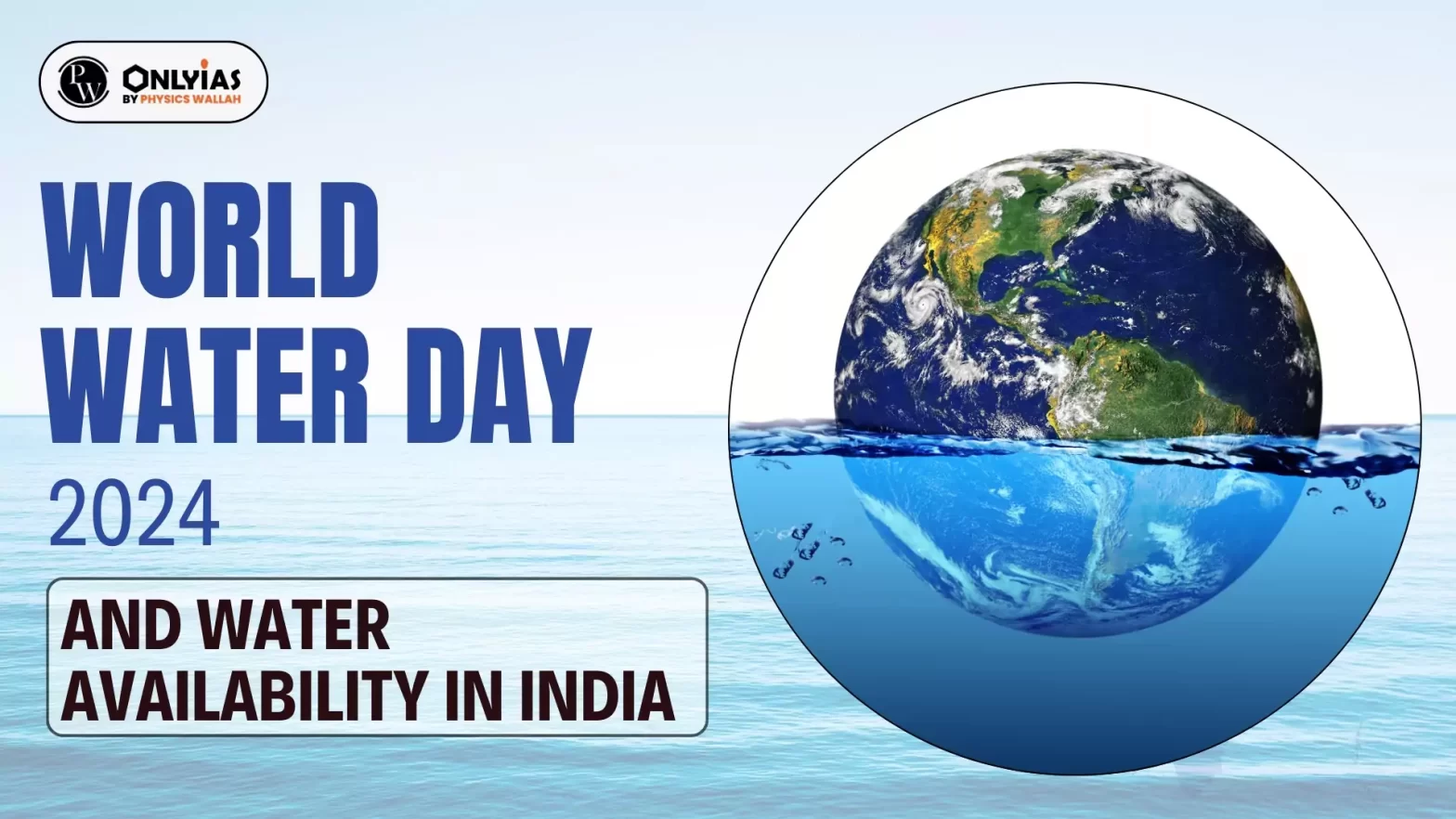Context
World Water Day (March 22) is a global initiative backed by the United Nations, and has been observed every year since 1993. The world water day theme 2024 is “Water for Peace”.
Status of Water Availability in India
- Water availability in India is already low enough to be categorised as water stressed, and is expected to reduce further to 1341 cubic metres by 2025 and 1140 cubic metres by 2050.
- Also, 72% of all water withdrawals are for use in agriculture, 16% by municipalities for households and services, and 12% by industries.
Reasons for Water Crisis in India
- Multiple factors are responsible for Water Crisis such as rapid urbanisation, industrialisation, unsustainable agricultural practices, climate change, erratic rainfall patterns, water overuse and inefficient water management, pollution, inadequate infrastructure, a lack of ‘belongingness’ among stakeholders, runoff due to high rain along with soil erosion and sedimentation.
Issues Relating to Water Scarcity in India
- Poor functioning of ecosystems: This threatens food and water security, and, ultimately, affects peace.
- Conflict and Unrest: According to the World Resources Institute, 17 countries face ‘extremely high’ levels of water stress which is threatening to result in conflict, unrest and peace among people. India is not an exception to these problems.
Cause and Effect of Water Stress in India
- Groundwater Depletion is a major issue in almost every city and State in India.
- Many Perennial rivers/streams have intermittent flows or have run dry.
- Rainfed regions in India comprise over 48% of land area and produce nearly 45% of the gross agricultural product.
- Lack of or inappropriate catchment treatment measures, bad design and poor maintenance of water bodies, most of the reservoirs/waterbodies/wetlands have silted up, resulting in reduced storage capacity and lower efficacy.
Solutions to Mitigate Water Crisis in India
- Promoting sustainable agricultural production: ensuring efficient irrigation techniques such as integrating water resources with micro- irrigations systems and IOT based automation.
- Growing low water requirement crops.
- Optimal crop plan having integrated farming system models.
- Rainwater harvesting (in-situ and ex-situ) and rooftop rainwater harvesting are viable ations to boost and maintain food grain production.
- The government’s emphasis on ‘per drop more crop’, ‘Gaon ka pani gaon mein’, ‘Khet ka pani khet mein’, ‘Har Medh per ped’ under various programs is a step in the right direction.
- Monitoring the groundwater table and the reclamation of the water quality of groundwater, rivers and waterbodies.
- Water Pricing and promotion of a Circular Water Economy: having integrated water resource management; installing water metres to reduce water use for domestic purposes;
- Ensuring Neutrality: in terms of groundwater Usage and land neutrality.
- Resilience against Climate Change: Building resilience against climate change and ensuring the needs of a growing population by adopting an integrated and inclusive approach to manage water which is a finite resource.
- Reduction in Water loss: From water distribution system and ensuring safe wastewater reuse.
- Desalination and tube well/borewell development.
- Enabling the integration and collaboration of research, industry and academia to implement different developed and new technologies.
Conclusion
With these solutions, the theme of World Water Day 2024 can be strengthened and India can become water secure. These are also steps to ensure a more peaceful world.
Also Read: State Of Global Water Resources Report 2022: By WMO
![]() 22 Mar 2024
22 Mar 2024

